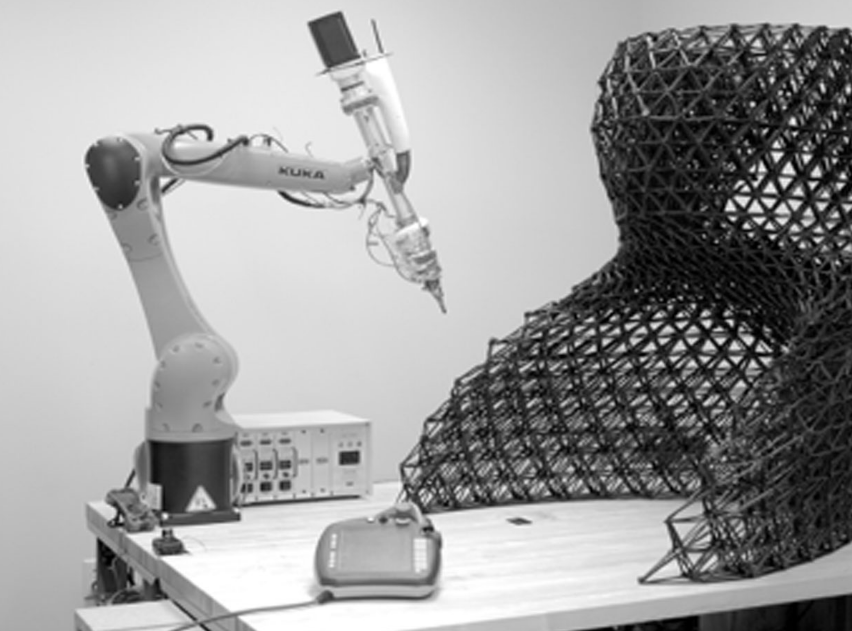As a disruptive technology, 3D printing
or additive manufacturing facilitates the creation of a variety of solid
items and objects from digital 3D models through a layering process.
Both individuals and enterprises in India these days leverage various 3D
printing technologies to convert their imaginations and ideas into
physical objects by combining imagination and creativity. We can predict
the future of 3D printing in India based on the exponential growth
potential suggested by various market research studies.
According to Manufactur3D Magazine, “The
Indian 3D printing industry is still at a nascent stage. However, it
offers huge growth opportunities in the coming years. In numbers, Indian
3D Printing Industry is currently below $100 million, but holds the
potential of becoming $1billion in coming few years.”
At
present, customers in India have the option to choose from a wide range
of 3D printers according to their precise needs and budget. Also, they
can avail themselves of professional 3D printing services
to convert digital files into physical objects without investing in 3D
printers. But the future of 3D printing in India will be shaped by a
slew of factors – policies, strategies, partnerships, collaborations,
and investments.

Predicting the Future of 3D Printing in India
Growth and Business Opportunities
The steady growth of the 3D printing market in India will create many new business opportunities. Both businesses and startups can leverage these opportunities in a variety of ways – producing 3D printers, selling 3D printers, supplying 3D filaments, providing 3D printing services, and selling 3D-printed products. Every entrepreneur will have the option to deal in a variety of 3D printers and filaments.
Likewise, a startup can generate recurring revenue by offering 3D designing, 3D scanning, and 3D printing services. Hence, enterprises will shape the future of 3D printing in India by capitalizing on many new opportunities. However, most entrepreneurs will target enterprise clients and deal in industrial 3D printing to generate more revenue.
Local 3D Printing Facilities
Many large companies have already announced their plans to set up 3D printing facilities in various tier-1 cities in India. For instance, Kerala-based Peekay Group is all set to open a 3D printing technology facility at the Airport City by signing an agreement with Bengaluru Airport City Ltd (BACL). Likewise, the Government of Telangana has announced its decision to set up the National Centre for Additive Manufacturing (NCAM) in Hyderabad. The local 3D printing facilities will drive the growth of the 3D printing market across Indian states.
Partnerships and Collaborations
Many private sector players form partnerships to leverage the growth opportunities created by 3D printing technologies. Some of these partnerships and collaborations aim to achieve high-quality 3D printing services customized according to precise project needs. At the same time, many collaborations aim to make 3D printing technologies accessible to Indian customers. For instance, Hindustan Aeronautics Limited (HAL) collaborated with Wipro3D to facilitate the designing, development, production, and repairing of aerospace components using metal 3D printing technologies.
Key Challenges and Barriers
The adoption and growth of 3D printing in India are directly impacted by a slew of factors. The companies dealing in 3D printing machines, software, and filaments must address these key challenges proactively to leverage the growth opportunities created by additive manufacturing.
- High cost of advanced 3D printers
- Low-performance of inexpensive 3D printers
- Limited access to 3D printing filaments
- Constraints related to technical knowledge, skills, and expertise
- Absence of local 3D printing facilities
National 3D Printing Policy
In 2020, the Central Government announced a 3D printing policy intending to help domestic companies leverage commercial opportunities by overcoming both technical and economical barriers. The policy will help domestic companies and startups to set up global bases for 3D manufacturing in India. The policy formulated by the Ministry of Electronics and Information Technology (MeitY) will shape the future of 3D printing in India by eliminating many technical and economical barriers.
Transition to Industry 4.0
Industry 4.0 or the fourth industrial revolution has already started transforming many industries through automation and digital transformation. 3D printing is one of the disruptive technologies driving Industry 4.0. But many industries in India are yet to adopt and leverage additive manufacturing.
But several studies suggest that 3D printing has the potential to transform most industries in India including manufacturing, engineering, automotive, aerospace, housing, and defense. Many experts cite the lack of awareness and understanding as the key reason slowing 3D printing adoption in India.
According to Business Today, “The technology, which took its first steps over three decades ago, is now catching on in India, where companies ranging from Tata Motors and JSW Steel to GE Transportation and tens of start-ups, apart from organizations such as ISRO, are reaping its benefits in the form of higher precision and lower costs.”
The 3D printing training programs and 3D printing services will make it easier for enterprises from various industries to leverage additive manufacturing. That is why; transition to Industry 4.0 will remain one of the most significant indicators of the future of 3D printing in India in the near future.
3D Printing Training and Awareness

Many
startups aim to make 3D printing accessible to the masses. But no
business can enhance the popularity and accessibility of additive
manufacturing without promoting training and awareness aggressively.
Many 3D companies in India already create awareness and train
enthusiasts through training programs and workshops.
The consistent growth of 3D printing will boost the popularity of relevant courses and training programs. Many students and professionals will join such courses to create solid objects by combining the right 3D printer and filaments. Many students will join 3D printing courses to enhance their career prospects.
As highlighted by several market researchers and analysts, the 3D printing industry in India will grow consistently and steadily in the future. But the future of 3D printing in India will be driven by the way businesses and startups address the existing and emerging channels. Both private and public sectors have to take several initiatives to make advanced 3D printing technologies popular and affordable in various parts of the country in the short and long runs.
References:
https://manufactur3dmag.com/indian-3d-printing-industry-highlights-of-the-year-2020/
https://www.think3d.in/3d-printing-business-in-india/
https://www.electronicsb2b.com/eb-specials/industry-report/3d-printing-business-opportunity/
https://3dprint.com/271107/3d-printing-in-india-slow-adoption-what-the-future-holds/
